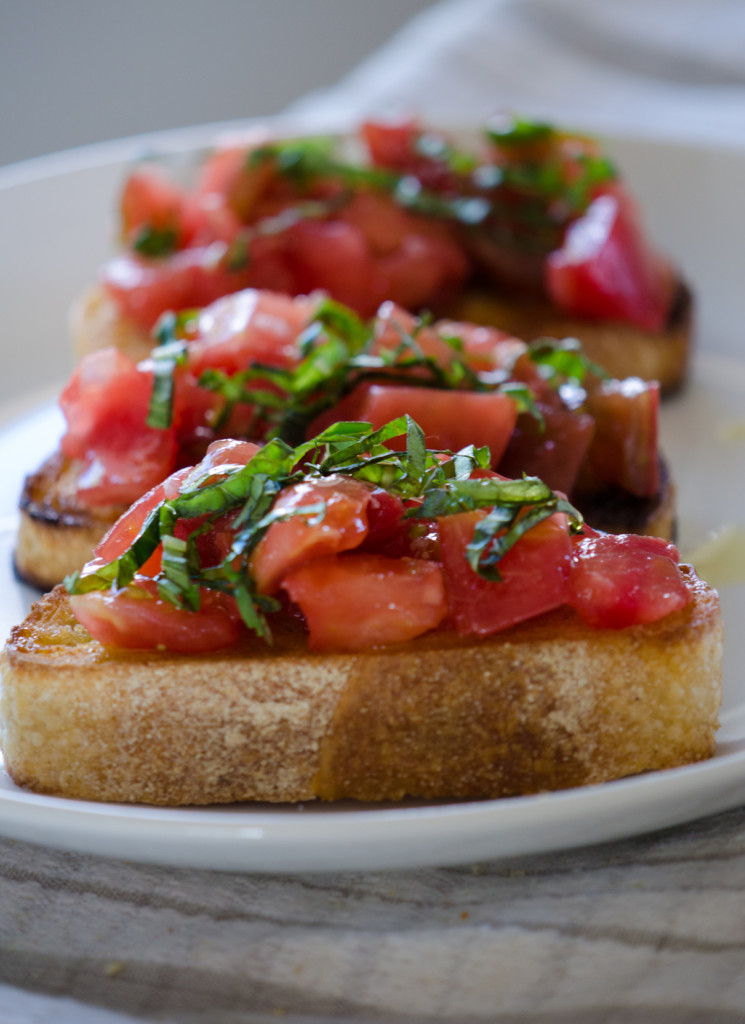 Enjoying an afternoon wine tasting with a plate of bruschette is the perfect way to relax after a day of cycling in Tuscany. But what exactly is bruschetta – it seems to take on many forms here in Tuscany – and how do I impress my friends back home with an authentic and delicious version?
Enjoying an afternoon wine tasting with a plate of bruschette is the perfect way to relax after a day of cycling in Tuscany. But what exactly is bruschetta – it seems to take on many forms here in Tuscany – and how do I impress my friends back home with an authentic and delicious version?
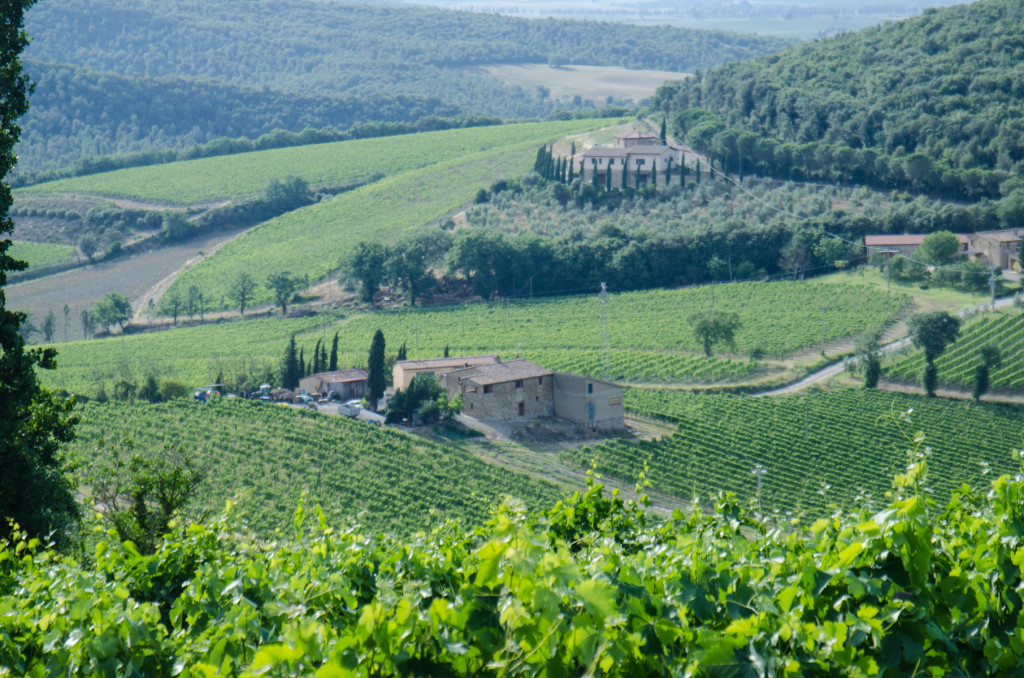 Let’s begin with saying it correctly – it is pronounced BRU-sketta, note the “ch” is pronounced as “k” in Italian. The name bruschetta comes from the Roman dialect verb bruscare, meaning ‘to roast over coals’. This is an ancient dish, dating back to the Etruscan age. Then, this referred to a simple dish of grilled bread – best day old, a bit stale – either grilled or baked in an oven, rubbed with garlic and drizzled with olive oil. According to Marcella Hazan, the dish most likely originated in ancient Rome, when olive growers bringing their olives to the local press would toast slices of bread to sample their fresh-pressed oil. In Tuscany, renowned for its olive oil, the olive farmers believe that the oil should be very young and recently pressed and that bruschetta is best accompanied by a glass of wine. As an old Italian proverb goes, “Day-old bread, month-old oil, and year-old wine”.
Let’s begin with saying it correctly – it is pronounced BRU-sketta, note the “ch” is pronounced as “k” in Italian. The name bruschetta comes from the Roman dialect verb bruscare, meaning ‘to roast over coals’. This is an ancient dish, dating back to the Etruscan age. Then, this referred to a simple dish of grilled bread – best day old, a bit stale – either grilled or baked in an oven, rubbed with garlic and drizzled with olive oil. According to Marcella Hazan, the dish most likely originated in ancient Rome, when olive growers bringing their olives to the local press would toast slices of bread to sample their fresh-pressed oil. In Tuscany, renowned for its olive oil, the olive farmers believe that the oil should be very young and recently pressed and that bruschetta is best accompanied by a glass of wine. As an old Italian proverb goes, “Day-old bread, month-old oil, and year-old wine”.
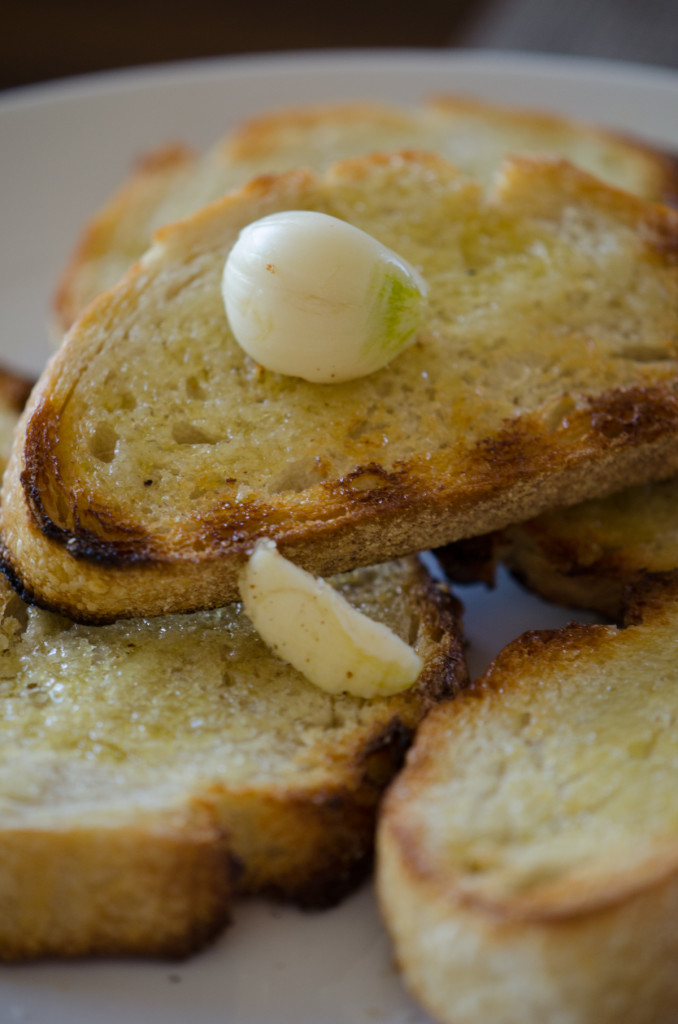 Today, the term bruschetta often refers to an antipasti that consists of this basic grilled bread served with just about any topping you can imagine. All over Italy you will see an enormous variety of options – with meats like prosciutto crudo, chicken livers, fresh sausage or lard; versions served with zucchini, eggplant, mushrooms, bell peppers and many different kids of cheeses. Probably the most common version is the bruschetta al pomodoro, topped with tomatoes, basil, and more olive oil.
Today, the term bruschetta often refers to an antipasti that consists of this basic grilled bread served with just about any topping you can imagine. All over Italy you will see an enormous variety of options – with meats like prosciutto crudo, chicken livers, fresh sausage or lard; versions served with zucchini, eggplant, mushrooms, bell peppers and many different kids of cheeses. Probably the most common version is the bruschetta al pomodoro, topped with tomatoes, basil, and more olive oil.
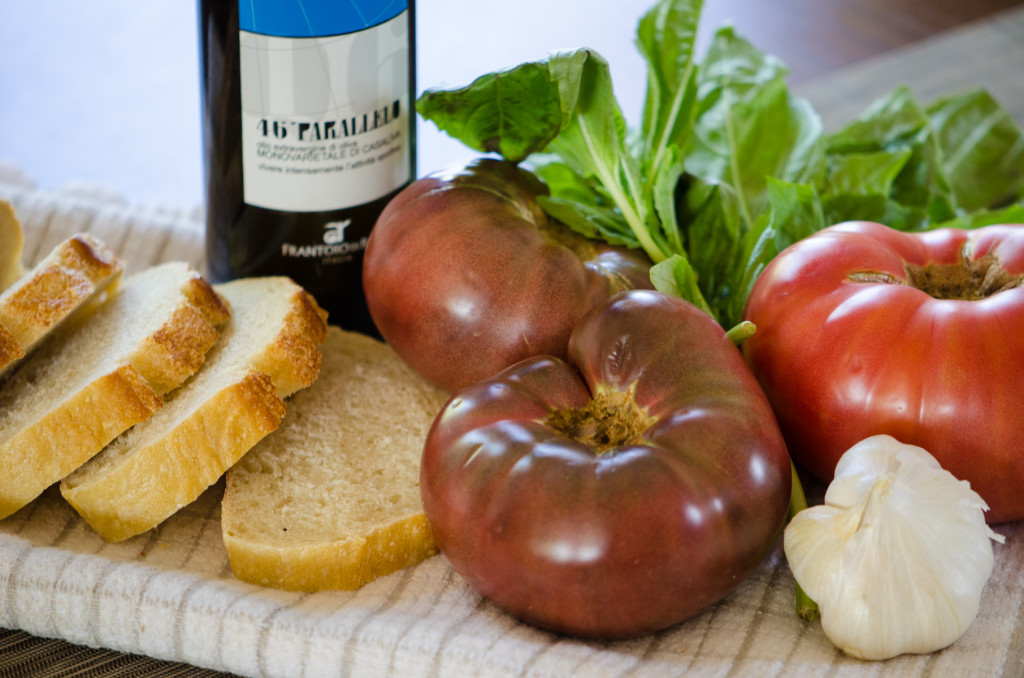 Three simple tips for making great bruschetta in your own kitchen:
Three simple tips for making great bruschetta in your own kitchen:
Great ingredients – Now is the time to invest in a wonderful bottle of fresh olive oil from your local gourmet store, or open that one you brought home from Italy. Buy a marvelous loaf of sourdough or other artisinal bread. Coarse grain salt. Fresh garlic.
Top it according to the season – One of the most distinctive differences between an Italian cook and a US cook is creating menus according to what is in season. If it is not currently growing in their neighborhood, Italians don’t use it. I’ve been in the prosecco zone, about 15km away Bassano del Grappa, home to some absolutely amazing white asparagus, and the producer I was chatting with claimed they never eat this delicacy, even in season, because “we don’t grow that here.” So now, in August, I’m making bruschetta al pomodoro with fresh, local heirloom tomatoes. I’ll enjoy this version until the end of the tomato season, and won’t eat it again until next July. In the meantime, there are mushroom bruschette to enjoy in the fall, maybe radicchio and chestnut; sauteed kale or chicken livers in colder months. Spring will bring bruschette with peas and asparagus.
Serve with a great Tuscan wine – And perhaps explore beyond Chianti. Absolutely nothing wrong with Chianti, I love them. But the Italian wine universe does not begin and end there. There are MANY other wines in Tuscany. How about a Brunello di Montalcino? Or a Vino Nobile? Or a Syrah from Cortona? Or a Carmignano?….
Makes 8
Ingredients
2 large or 3-4 medium, fresh, local, amazing tomatoes, diced small
Kosher salt and freshly ground black pepper
1/4 cup fresh basil leaves, sliced into ribbons
8 slices of a great bread, sliced about 1/2” thick
1 – 2 cloves fresh garlic
High quality fresh extra-virgin olive oil
Place the tomatoes in a colander over a plate to catch the juices. Season with salt and pepper, and half of the basil. Let sit at room temperature while you toast the bread.
Toast the bread in a 350° oven directly on the rack until golden brown, about 5 minutes. Or grill. You want nicely browned grill lines, but still a softer interior – best to soak up juicy tomatoes.
Remove from oven, and rub each slice all over with a garlic clove. Brush each slice with olive oil. Place the bread slices on a serving plate, top the bread with tomatoes, garnish with remaining basil and drizzle with extra-virgin olive oil right before serving.
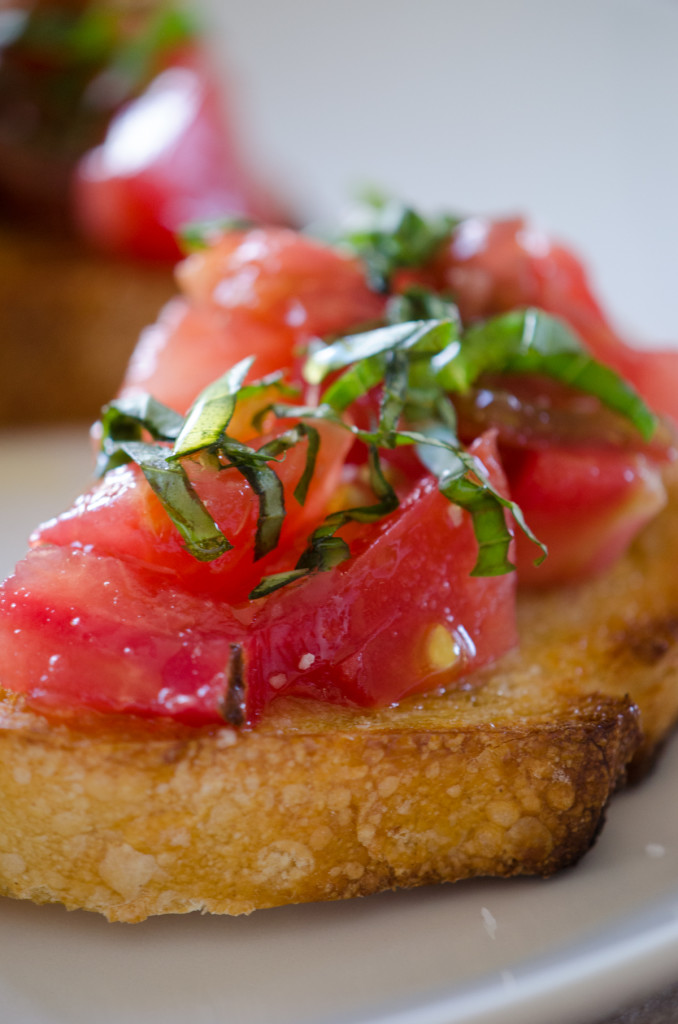

Pingback: A Travel Guide to Cortona, Italy | Italian Food, Wine, and Travel
Pingback: Eating Your Way Through Cortona, Italy – Honest Cooking
Pingback: More Secrets to a Great Bruschetta | Italian Food, Wine, and Travel